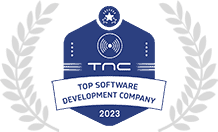Effective inventory management is crucial for the success of any business that deals with products. From ensuring that stock levels meet customer demand to minimizing holding costs, the way you manage your inventory can make or break your operational efficiency. NetSuite, a robust cloud-based enterprise resource planning (ERP) solution, offers a comprehensive suite of tools designed to help businesses streamline their inventory processes. In this guide, we’ll explore how to leverage NetSuite to optimize your inventory management effectively.
Understanding NetSuite’s Inventory Management Features
NetSuite’s inventory management capabilities provide businesses with the tools they need to track inventory levels, orders, sales, and deliveries. Understanding these features is the first step toward optimizing your inventory management.
Real-Time Inventory Tracking
NetSuite offers real-time visibility into your inventory across multiple locations. This feature enables businesses to monitor stock levels accurately, avoiding overstocking and stockouts.
- Multi-Location Management: Businesses with multiple warehouses can manage inventory across locations from a single platform. This functionality enhances visibility and control over stock distribution.
- Barcoding and Scanning: Using barcodes, businesses can easily track inventory movements and streamline the receiving and shipping processes.
Demand Planning and Forecasting
Predicting customer demand is vital for maintaining optimal stock levels. NetSuite provides advanced forecasting tools to help businesses make informed decisions.
- Historical Data Analysis: By analyzing past sales data, businesses can identify trends and seasonality, allowing them to adjust inventory levels proactively.
- Automated Replenishment: Set reorder points based on sales forecasts to automate replenishment processes, ensuring that stock is always available when needed.
Integrated Order Management
NetSuite integrates inventory management with order management, providing a seamless experience from order placement to fulfillment.
- Real-Time Order Tracking: Businesses can track orders in real-time, ensuring timely fulfillment and improved customer satisfaction.
- Drop Shipping: NetSuite enables businesses to drop ship items directly from suppliers to customers, reducing holding costs and improving cash flow.
Best Practices for Inventory Optimization with NetSuite
To fully leverage NetSuite’s capabilities, businesses should implement best practices for inventory optimization. These practices can help streamline operations and improve overall efficiency.
1. Regularly Review Inventory Levels
Maintaining optimal inventory levels is a continuous process. Regularly reviewing your inventory helps identify slow-moving items and allows you to make necessary adjustments.
- ABC Analysis: Categorize inventory items based on their importance. Focus on high-value items (A) while keeping a closer eye on less critical items (B and C).
- Cycle Counting: Implement cycle counting instead of traditional annual counts. This method involves regularly counting a subset of inventory, helping to maintain accuracy.
2. Implement Inventory Control Techniques
Inventory control techniques help businesses manage their stock efficiently, minimizing costs while meeting customer demand.
- Just-in-Time (JIT) Inventory: Adopt JIT practices to reduce holding costs. This approach involves ordering inventory only when needed, aligning closely with production schedules.
- First In, First Out (FIFO): Ensure that older stock is sold first, reducing the risk of obsolescence and spoilage.
3. Leverage NetSuite’s Analytics and Reporting
NetSuite offers powerful analytics and reporting tools to help businesses gain insights into their inventory performance.
- Dashboards and KPIs: Create customizable dashboards that display key performance indicators (KPIs) related to inventory, such as turnover rates and stock levels.
- Custom Reports: Generate reports to analyze inventory trends, identify issues, and inform decision-making.
Streamlining Supply Chain Management with NetSuite
Optimizing inventory management goes hand-in-hand with efficient supply chain management. NetSuite provides features that help businesses streamline their supply chain operations.
1. Supplier Relationship Management
Building strong relationships with suppliers can significantly impact inventory management.
- Vendor Performance Tracking: Use NetSuite to evaluate supplier performance based on delivery times, quality, and pricing, helping you make informed sourcing decisions.
- Collaboration Tools: Leverage NetSuite’s collaboration features to communicate with suppliers effectively, facilitating better coordination and problem resolution.
2. Automating Procurement Processes
Automating procurement processes can help businesses save time and reduce errors.
- Purchase Order Automation: Automate purchase orders based on inventory levels and sales forecasts, ensuring timely replenishment without manual intervention.
- Supplier Portals: Allow suppliers to access relevant information, such as order history and forecasts, to improve communication and efficiency.
Enhancing Customer Satisfaction Through Inventory Management
Effective inventory management not only improves operational efficiency but also enhances customer satisfaction. NetSuite’s features can help businesses meet customer expectations consistently.
1. Accurate Order Fulfillment
Timely and accurate order fulfillment is crucial for customer satisfaction. NetSuite helps businesses streamline their fulfillment processes.
- Pick, Pack, and Ship: Use NetSuite’s order management features to streamline the picking, packing, and shipping processes, reducing lead times.
- Real-Time Updates: Provide customers with real-time updates on their order status, enhancing transparency and trust.
2. Returns Management
A well-organized returns process can improve customer satisfaction and loyalty.
- Efficient Returns Processing: Use NetSuite to manage returns efficiently, tracking returned items and adjusting inventory levels accordingly.
- Customer Feedback Loop: Gather customer feedback on returned items to identify issues and improve product offerings.
Integrating NetSuite with Other Business Systems
Integrating NetSuite with other business systems can enhance inventory management and overall operational efficiency.
1. Accounting Software Integration
Integrating inventory management with accounting systems ensures that financial and inventory data are aligned.
- Accurate Financial Reporting: Real-time inventory data helps maintain accurate financial records, leading to better financial reporting and forecasting.
- Cost Management: Monitor the cost of goods sold (COGS) and inventory holding costs to improve overall profitability.
2. E-Commerce Integration
For businesses with an online presence, integrating NetSuite with e-commerce platforms is essential for streamlined operations.
- Real-Time Inventory Syncing: Ensure that inventory levels are updated in real-time across all sales channels, preventing overselling and stockouts.
- Enhanced Customer Experience: Provide customers with accurate product availability information, enhancing their shopping experience.
Overcoming Common Inventory Management Challenges
Despite the benefits of optimized inventory management, businesses often face challenges. Understanding these challenges can help you develop effective strategies.
1. Demand Fluctuations
Fluctuating demand can create inventory challenges, leading to stockouts or excess inventory.
- Sales Forecasting: Use NetSuite’s forecasting tools to analyze historical data and predict future demand accurately.
- Flexible Inventory Strategies: Adopt flexible inventory strategies that allow for quick adjustments based on changing market conditions.
2. Inventory Accuracy
Maintaining accurate inventory records is essential for effective management.
- Regular Audits: Conduct regular audits to ensure inventory records align with physical stock levels.
- Automation: Utilize automation tools within NetSuite to reduce manual errors and improve inventory accuracy.
Continuous Improvement in Inventory Management
Optimizing inventory management is an ongoing process. Continuous improvement helps businesses adapt to changing market conditions and customer demands.
1. Regular Training and Education
Investing in training and education for employees ensures that they are equipped with the knowledge and skills needed to manage inventory effectively.
- Training Programs: Offer regular training sessions on using NetSuite’s features and best practices for inventory management.
- Knowledge Sharing: Encourage knowledge sharing among team members to foster a culture of continuous improvement.
2. Stay Updated on Industry Trends
Staying informed about industry trends and best practices is essential for effective inventory management.
- Networking: Attend industry conferences and networking events to gain insights from peers and experts.
- Research and Development: Continuously research new technologies and methodologies that can enhance inventory management practices.
Conclusion
Optimizing inventory management with NetSuite is a critical step for businesses looking to improve operational efficiency, reduce costs, and enhance customer satisfaction. By leveraging NetSuite’s robust features, implementing best practices, and continuously seeking improvement, businesses can ensure that their inventory processes are streamlined and effective. In an ever-evolving marketplace, staying proactive and adaptable is essential for success.
20 Unique FAQs About Optimizing Inventory Management with NetSuite
- What is NetSuite’s inventory management feature?
NetSuite’s inventory management feature provides tools for tracking inventory levels, orders, sales, and deliveries in real-time. - How does real-time tracking benefit my business?
Real-time tracking enables businesses to monitor stock levels accurately, reducing the risk of overstocking and stockouts. - What is demand forecasting in NetSuite?
Demand forecasting involves predicting future inventory needs based on historical sales data and trends. - Can NetSuite help with multi-location inventory management?
Yes, NetSuite allows businesses to manage inventory across multiple locations from a single platform. - How can I reduce holding costs with NetSuite?
By implementing Just-in-Time (JIT) inventory practices and automating replenishment, you can reduce holding costs. - What is cycle counting?
Cycle counting involves regularly counting a subset of inventory to maintain accuracy instead of conducting annual counts. - How does supplier relationship management improve inventory management?
Strong supplier relationships lead to better coordination, timely deliveries, and improved inventory control. - What role does automation play in inventory management?
Automation streamlines procurement and replenishment processes, reducing manual errors and saving time. - How can I analyze inventory performance with NetSuite?
Use customizable dashboards and reports to monitor key performance indicators (KPIs) related to inventory. - What is the benefit of using ABC analysis for inventory management?
ABC analysis helps prioritize inventory management efforts on high-value items, improving resource allocation. - How can accurate order fulfillment enhance customer satisfaction?
Timely and accurate order fulfillment builds customer trust and improves overall satisfaction with your service. - What challenges do businesses face with demand fluctuations?
Demand fluctuations can lead to stockouts or excess inventory, complicating inventory management. - How often should I conduct inventory audits?
Regular audits, such as monthly or quarterly, help ensure that inventory records align with physical stock levels. - Can NetSuite integrate with e-commerce platforms?
Yes, NetSuite can integrate with various e-commerce platforms, ensuring real-time inventory syncing. - What is the importance of training for inventory management?
Training ensures that employees have the necessary skills and knowledge to manage inventory effectively. - How can I improve inventory accuracy?
Conduct regular audits and utilize automation tools to reduce manual errors and maintain accurate records. - What is a drop shipping strategy?
Drop shipping allows businesses to ship products directly from suppliers to customers, reducing holding costs. - How does NetSuite handle returns management?
NetSuite facilitates efficient returns processing and inventory adjustments, improving customer satisfaction. - What are some common inventory management mistakes?
Common mistakes include poor demand forecasting, lack of automation, and inadequate supplier management. - How can I stay updated on inventory management trends?
Attend industry events, network with peers, and follow relevant publications to stay informed on best practices.
By implementing these strategies and utilizing NetSuite effectively, businesses can optimize their inventory management processes, enhancing efficiency and customer satisfaction.
- How to Optimize Inventory Management with NetSuite - October 4, 2024
- Best Practices for Customizing NetSuite to Meet Business Needs - October 4, 2024
- How to Successfully Migrate Your Business Data to NetSuite - October 4, 2024




















